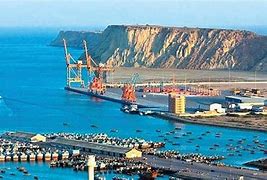As electricity tariffs in Pakistan keep rising, former President Asif Ali Zardari stressed the necessity of increasing solar power generation in the country.
“Electricity is so expensive that ordinary people cannot afford it; we should focus on solar power generation,” Asif Ali Zardari told a press conference in Karachi. “Instead of setting up solar powerhouses, we should help individuals have their own solar system in their homes and on their farmlands,” Zardari suggested, adding that to this end, the government should provide soft loans to individuals. If there is more energy than their consumption, it should be supplied to the industrial sector, he said.
Pakistan has immense potential for solar power generation, but less than 2% of the total energy consumed in the country comes from solar power plants.
The Government has not made substantial progress in fully utilizing the country’s solar energy potential.
In 2015, National Electric Power Regulatory Authority (NEPRA) introduced Net-Metering Pakistan, an electricity policy for consumers to set up Renewable Energy (RE) facilities. They can use their own electricity and also can sell surplus energy to the National Grid.
However, the speed of Net-Metering adoption is very low in the country. According to data available with Gwadar Pro, so far, 20,296 licenses have been issued to consumers. Lahore Electric Supply Company (LESCO) has issued 5,431, Islamabad Electric Supply Company (IESC) 4,900, K-Electric 3,402, MEFCO 2,130, FESCO 1,310, PESCO 1081, GEFCO 1073, BTPL 484, DHA-EME 396, HESCO 47, SEPCO 24, QESCO 16 and TESCO only two.
Apart from Net-Metering, the adoption of Solar PV Technology is very high. Solar energy is not only slashing power bills but also providing uninterrupted electricity. Pakistan is processing RE (wind/solar) projects of 1400 MW under China-Pakistan Economic Corridor (CPEC), of which 700MW have been commissioned. They include four PV solar projects of 250MW.
The Government of Khyber Pakhtunkhwa, under a project entitled ‘Solarization Schools & Health Facilities’ is providing solar power to 8,000 schools, 4,000 worship places, and 187 health facilities. Under another project, the government is solarising business centers and Federally Administered Tribal Areas (FATA) by setting up solar mini-grid stations (Photovoltaic Solar System).
In addition to government initiatives, people who cannot afford to install a proper solar power facility can use one or two solar panels to run DC fans and other appliances during the daytime. Some people have also installed solar-powered tube wells on their small farms to cultivate vegetables and fruits.
Since the majority of solar panels, rechargeable Lithium-ion batteries, and inverters used in Pakistan come from China, the two countries need to expand their cooperation in the photovoltaic industry.
















